
9 Types Of Email Marketing Campaigns Analyzed [2025]
An efficient email marketing campaign is a great way to communicate with your clients, increase conversions, and boost click-through rates (CTR).
But even if you have the best copy, it won’t have the desired effect if you don’t know which kind of email to send to your target audience.
To empower your email marketing strategy, you need to understand the types of email marketing campaigns, what they do, and how to use them effectively at every stage of the buyer’s journey.
Let’s take a deep dive into these types so you can successfully tailor your strategy to build lasting relationships.

Buyer’s Journey Stage: Awareness
In this stage (also called the problem-aware stage), the prospect knows they have a problem that requires a solution.
Your future clients look at different options via search or social media and research the market to understand what’s bothering them. At this point, you need to ask yourself, “How can we prove that we have the expertise to help them?”
You engage them with the best strategy for this stage: a lead generation campaign.
Lead generation campaign
When you want to attract new customers, spread the word about your product, or create interest in your service, you need to start with a lead generation campaign.
In exchange for their email address, you offer valuable gated content with the information or solution they seek.
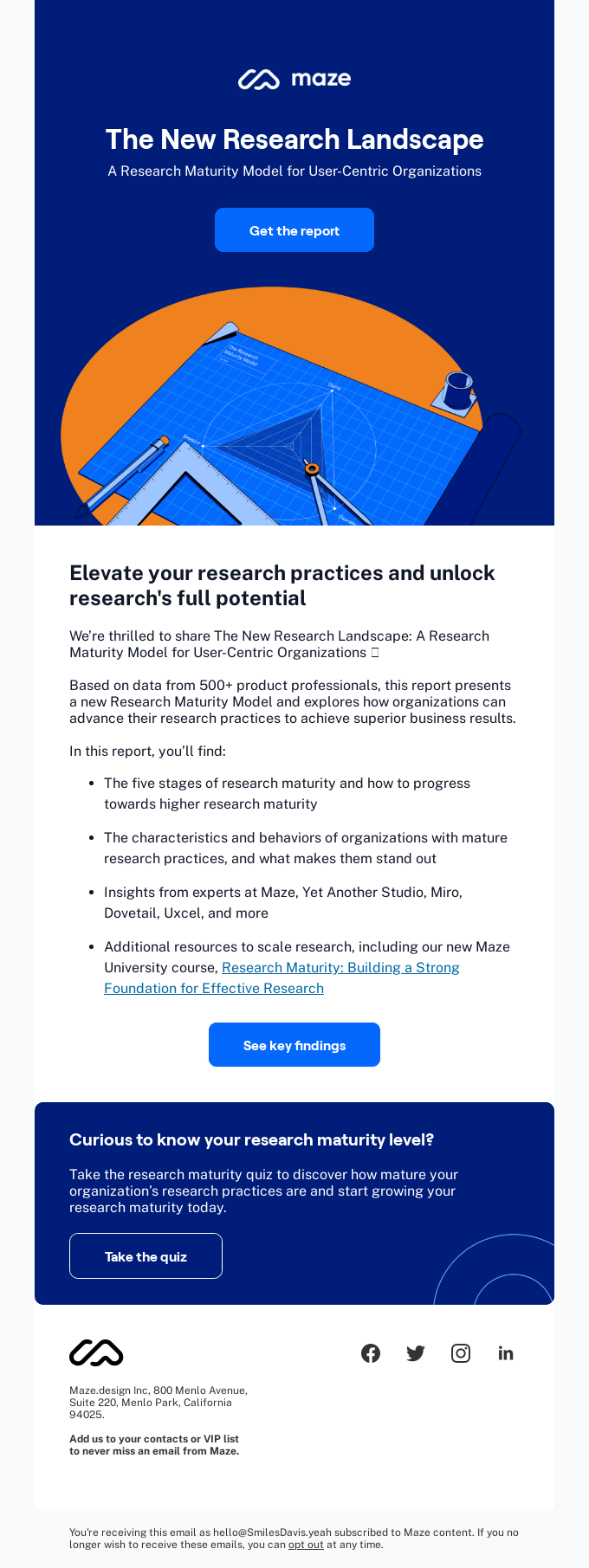
To do this successfully and build stronger connections with your audience, you must first set your goal and determine which content type you want to offer.
Should you focus on e-books or would a webinar be more informative?
After strategizing with your marketing team and finding the ideal content for your needs, you can regularly generate the desired leads.
Campaign goal: The main objective of a lead generation funnel is to collect high-quality leads and expand your email list.
Content type:
- E-books and case studies
- White papers and reports
- Templates and tools
- Webinars and videos (tutorials, brand videos, etc.)
- Landing pages
Target audience: Website visitors or social media followers.
Campaign timing: Remember that the campaign is ongoing, meaning you won’t get the desired results from the get-go.
Moreover, multiple factors play into its success, such as your search engine optimization (SEO) strategy, PPC (Pay-per-click) ads, or website design. You should cast a wide net of influence on as many channels as possible to reach a broader audience.
Buyer’s Journey Stage: Consideration
Right now, your potential new customers have a name for their issue, meaning that they have successfully identified it and scoured the Internet for a solution to their problem, evaluating all options and methods to solve it.
In a nutshell, they consider potential solutions but have yet to commit (aka buy).
Your objective is to pepper subscribers with helpful content — and highlight how your solution is better than your rivals’ offerings.
Welcome email campaign
When you gain a new subscriber, it’s okay to celebrate your victory, but you shouldn’t forget to introduce yourself.
With a friendly and warm welcome email sequence, you can receive better results, such as higher open rates and engagement.
Simply put, when someone signs up for your mailing list via product trials or newsletters, you can send them a nice message that lets them know more about your brand, offer them a discount, or thank them.
Let’s see an example:

The structure depends on what you want to include, but it’s good to keep them brief and straightforward.
If it seems like a daunting task, you can easily create your own welcome emails with these effective email templates.
Campaign goal: The purpose of these transactional emails is to leave a good first impression about your company and familiarize users with your brand’s message, values, and products. In short, it builds trust and sets the tone for future interactions.
Content type:
- Special offers
- Videos
- Written resources
Target audience: People interested in your products or services.
Campaign timing: It’s best to send a welcome email after a user performs an initial action, such as creating an account.
A best practice is to send this email within 24 hours from first contact.
Email newsletters
What exactly is a newsletter?
A newsletter is a regular email sent to your subscribers with company success stories, events, promotional announcements, or valuable resources from your blog. It’s a method for keeping subscribers in the loop about what your business is doing but also educates and entertains them.
Generally, they contain a headline, a brief introduction, and a call-to-action (CTA) button encouraging people to read more about what interests them.

Newsletter emails also take less time to create since you repurpose content from your blog, website, or social media channels.
Besides, there are many visually appealing templates you can use.
Campaign goal: A newsletter is ideal to market your brand to your existing customers and encourage them to interact with you. This way, you stay top of mind and increase brand awareness, getting you more return visitors.
Content type:
- Company updates
- Event or promotional announcement
- Blog content
- Company success stories
- ‘How to’ guides
Target audience: Your subscribers.
Campaign timing: Marketers send newsletters on a regular basis, such as weekly or monthly. They use this strategy to build anticipation in recipients and get them excited to read the next one.
Lead nurturing emails (drip campaigns)
When a prospect feels nearly ready to buy from you, it’s time to set the bait and hook them with a compelling email. A lead nurturing email (or drip campaign) does just that.
They’re a tightly connected series of emails containing personalized content, usually sent after someone takes a specific action on your website, such as accessing an e-book about landing pages. You then follow up with an email offering similar resources to increase conversion rates and drive revenue.
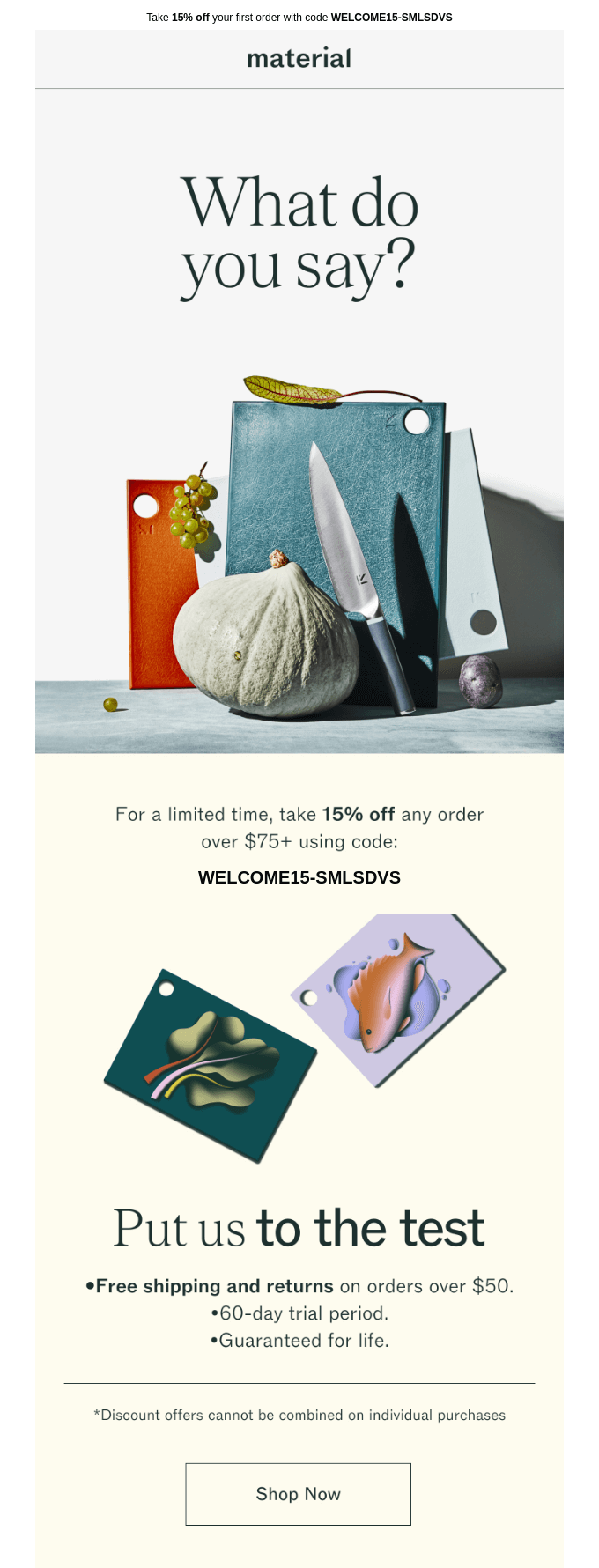
Always keep in mind your buyer persona. If you send out too many irrelevant messages, you risk having unopened or deleted emails.
Since drip campaigns work great as automated emails, you can use an email service provider to create and send them, thus saving time and resources.
If you need some inspiration, you can check these amazing drip campaign examples our team has compiled.
Campaign goal: The goal is to guide potential prospects, those ready to buy, through the marketing funnel and convert them into loyal customers.
Content type:
- Company news
- Blog posts
- e-books
- Coupons and offers
Target audience: Subscribers and customers ready to buy.
Campaign timing: You can use drip campaigns at any stage of the buyer’s journey. But be careful; if you give a plant too much water, it’ll wilt. Like plants, if you send subscribers too many emails, you risk them unsubscribing. Find a balance between too many and too little.
Surveys and feedback campaigns
How do you measure the effectiveness of your marketing campaigns? Is there a way to ensure you don’t repeat mistakes from the past that cost you dearly?
Yes! You can ask your customers for feedback.
Surveys are valuable tools for tracking and measuring how effective your digital marketing efforts are. And the best part is that you can collect this data from consumers via email.
Look at Google’s example:
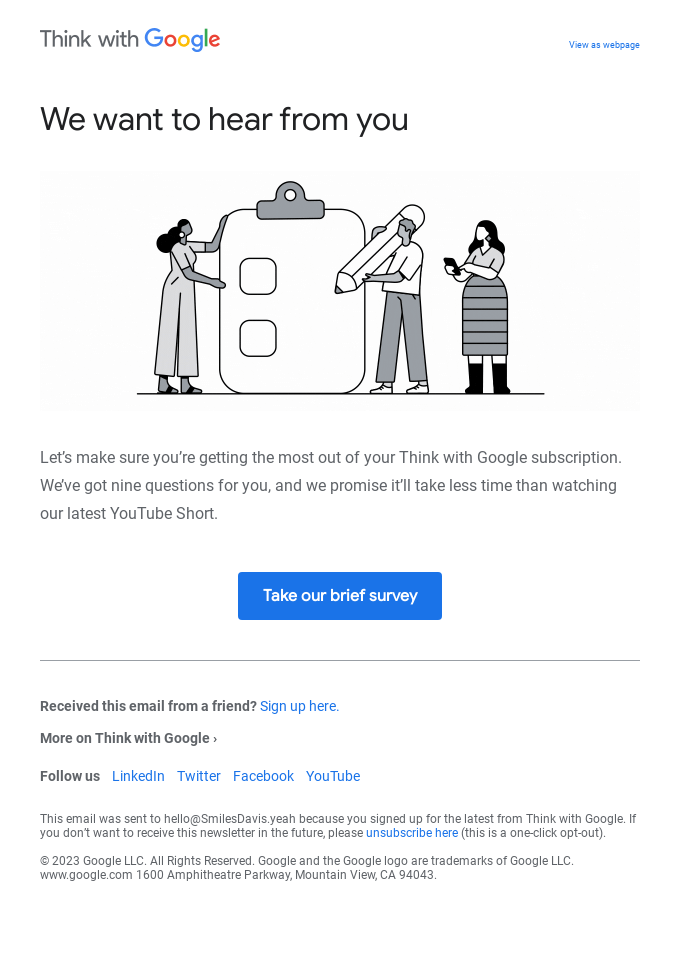
Surveys have different purposes. You can ask clients to review a product they bought recently or ask them about their experience with your services. Or, you can plan future projects by seeing what interests clients the most.
Remember to add a subject line describing the contents so prospects know what to expect.
Campaign goal: A survey email allows you to collect feedback from potential or existing clients to improve your strategy.
Content type:
- Email responses
- Website surveys
- Embedded questions in the email body
Target audience: Clients who bought from you or are interested in your brand.
Campaign timing: Send them after someone has bought a product from you or is more familiar with your company. If you don’t know when to send them, here are the best sending times.
Buyer’s Journey Stage: Decision
Your prospects have done their homework, found the right approach, and are ready to spend money. So, the decision (or product-aware) stage is when your prospects know what they want and have all the information they need to decide who’s the right person to solve their problem.
All that’s left to do now is compile a list of vendors they like, know, and trust and decide who’s the winner. Your job is to ensure they choose you.
Promotional emails
A pretty common practice in content marketing is sending out promotional emails. Everyone’s received an email like this in their inbox at some point.
The secret to making them effective is to be different from others and make them stand out.

Start with the subject line, which should include your offer. Instead of having a generic subject line that only stirs disinterest, this one entices readers to click on the email to check it out.
In the email’s body, be sure to include all the benefits and features of the existing or new product alongside the discount code, so email subscribers understand why they should invest in your product.
Campaign goal: Their focus is spreading the word about your product or service to prospective customers and helping them decide on a purchase.
Content type:
- Coupons or discounts
- Gated content
- Event announcement
Target audience: Subscribers in the decision stage.
Campaign timing: Use them strategically. No one wants to receive the same offer thrice on the same day. Even every day might seem a lot to some. Think the campaign through and send progressive emails that build from one to the next.
Abandoned cart emails
Sometimes, we add the desired products to our shopping cart — and leave them there.
Maybe we second-guess our decisions, need more time to think it over, or simply get distracted by daily life and forget to proceed to checkout. In these situations, an automatically triggered email might do the trick.
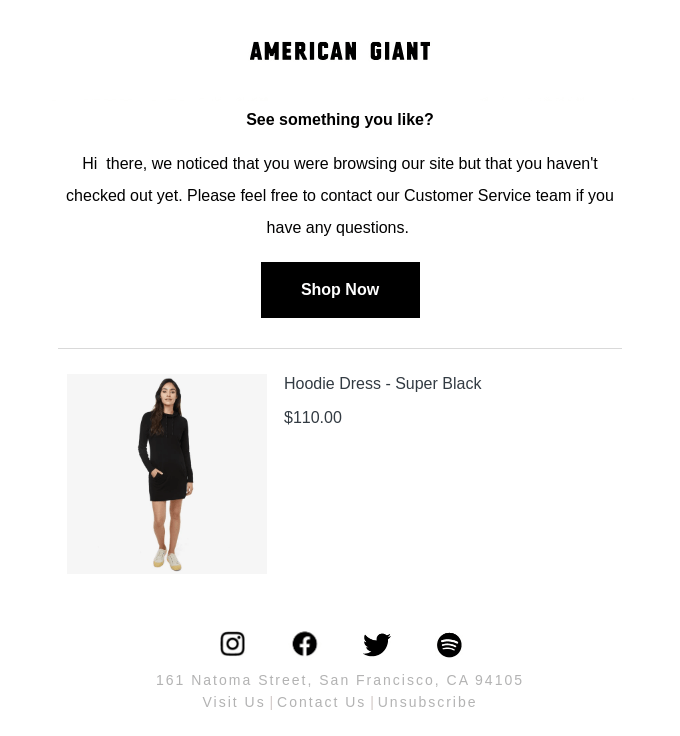
These types of emails create a sense of urgency through messages like in the example above, “We’ve noticed that you haven’t checked out yet.”
Add an image of the item or a description to further remind them what they might miss out on. To help drive sales and persuade someone to convert, add a compelling CTA.
What’s nice about these emails is that they get opened by more than 40% of users, which leads to more conversions.
Campaign goal: A cart abandonment email acts as a reminder and encourages users to return to your website and complete the purchase.
Content type:
- Discounts
- Special offers
Target audience: Users who want to buy from you.
Campaign timing: It doesn’t rely on timing. Since they’re automated, you send these follow-up emails when triggered by the user’s action of not completing a purchase.
Tip: Power up your marketing efforts with these examples.
Product updates and announcement emails
We all want to share good news with others. This strategy also applies to your company’s new product or service: you want to share it with all your subscribers.
We bet they’re also interested in learning more about the platform they use or discovering exciting features. Whatever the news, whether it’s a product launch or a cool new update, you should let them know through an email.
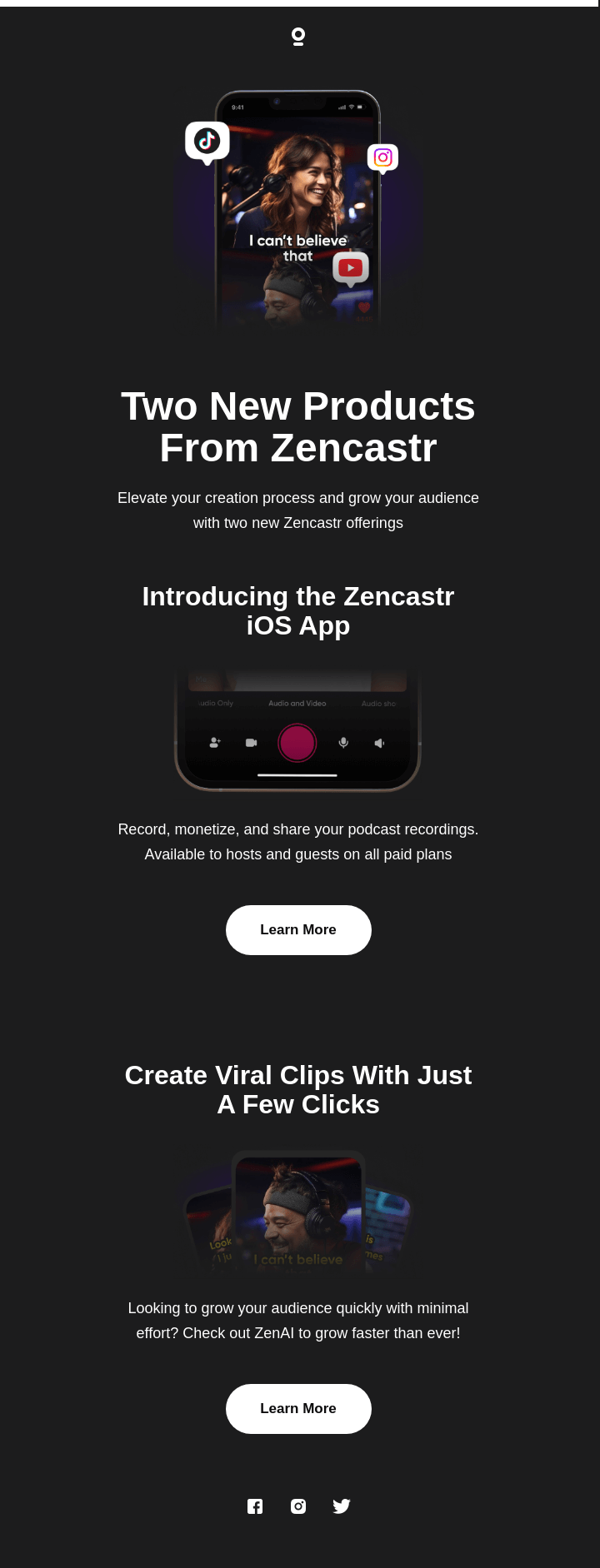
A good practice is to add as many details as possible so you anticipate and answer potential questions your clients might have.
It’s also worth adding links to resources and videos that feature the product to teach customers how to use it.
Campaign goal: The purpose of product updates is to engage clients and keep them in the loop about new functionalities.
Content type:
- Brief description of the product
- Discounts and offers
- Video tutorials
Target audience: Customers who use your products.
Campaign timing: Most companies send weekly or monthly emails to inform customers about the latest features or upcoming updates. Also, avoid sending them too often, and keep them simple.
Buyer’s Journey Stage: Post-purchase
A client-brand relationship doesn’t end after you ship the product; it’s only the beginning.
This is the stage when prospects have already invested time and money in your brand. It focuses on the actions a client takes after a purchase — and lasts until they make another.
So, to meet future expectations and nurture your relationship, you need to gauge how a customer feels after buying the product.
Re-engagement emails
After making a purchase, your subscribers probably won’t interact with your brand as much as before.
Don’t worry; it’s a normal part of the process. However, you shouldn’t let this situation fester.
After a while, if a prospect stops interacting with your emails, you can send them a re-engagement email that aims to win them back and remind them of the good times.

Tip: Get inspired with these B2B email marketing examples.
Campaign goal: By sending out these emails, you reconnect with inactive subscribers who have stopped engaging with your regular emails. It means anything from not opening emails to rare website visits. Moreover, it helps you clean your email list. Even if it’s disheartening to see someone go, these inactive subscribers can affect your reputation and email deliverability rates in the long run.
Content type:
- Promotions
- Company announcements
- Newsletters
- Valuable content
- Product updates
Target audience: People who purchased your products or haven’t engaged with your brand in a while.
Campaign timing: The key is to avoid pestering your audience with emails. They stopped engaging for a reason; they might not be ready for a new purchase or they’ve moved on.
Ready to Begin Your Next Email Marketing Campaign?
These many different types of emails might confuse even the most seasoned marketer.
But with the information in this article, you can create unique and effective emails — from seasonal campaigns to newsletter emails — that meet your needs and objectives.
We can inspire you even further with these email marketing examples. Yet what you truly need is a partner who can make your marketing dreams come true.
With the power of marketing automation, Moosend delivers a modern solution that helps you create beautiful emails and various types of email marketing campaigns that increase conversions and build connections.
Try Moosend for free now!



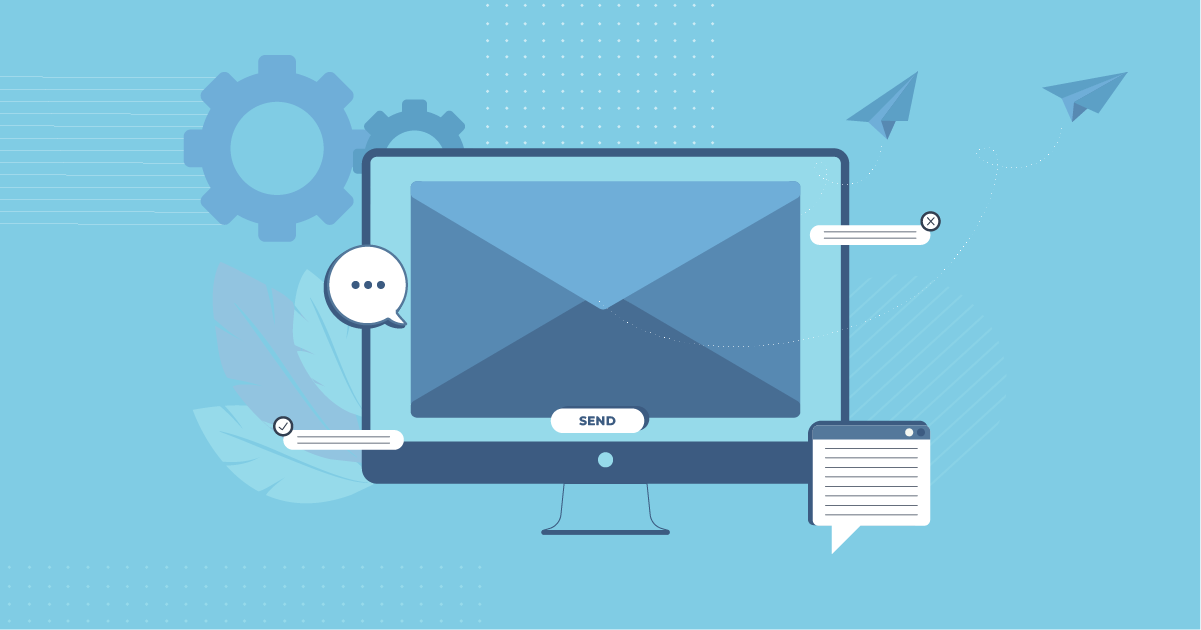
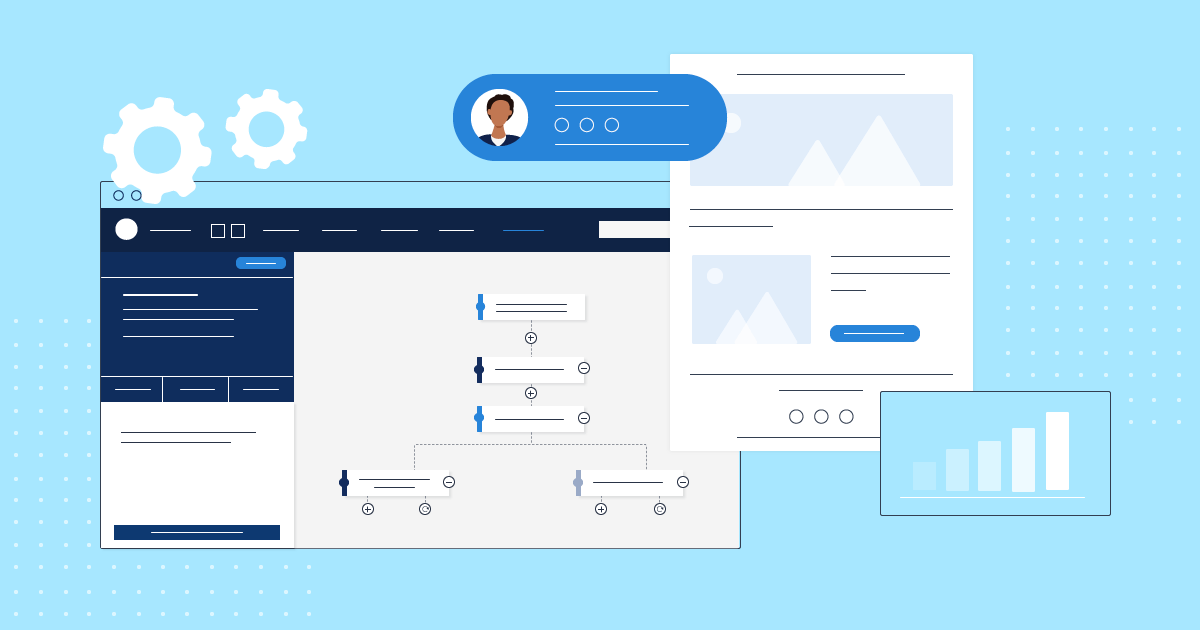
 Published by
Published by
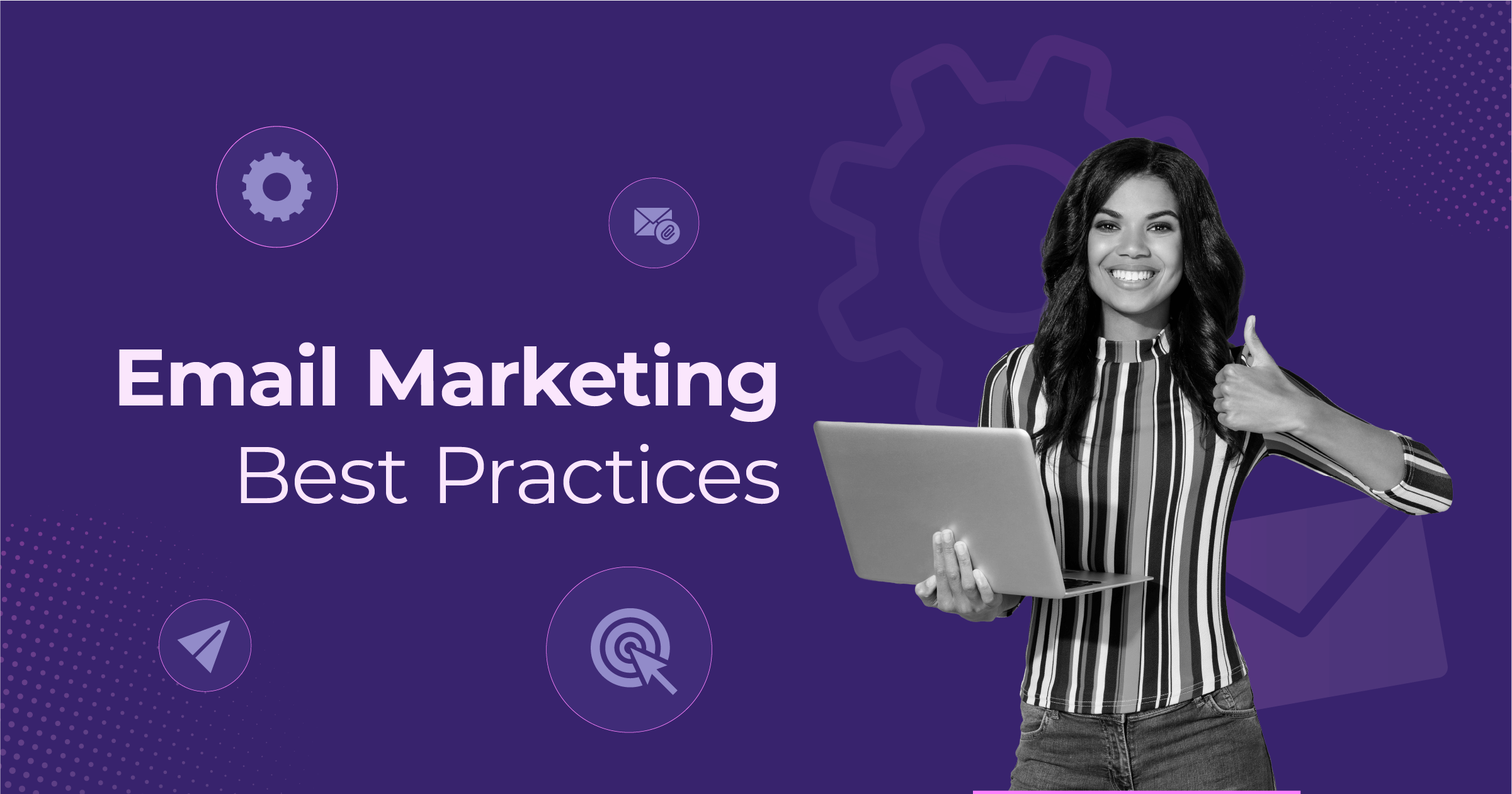
 Published by
Published by